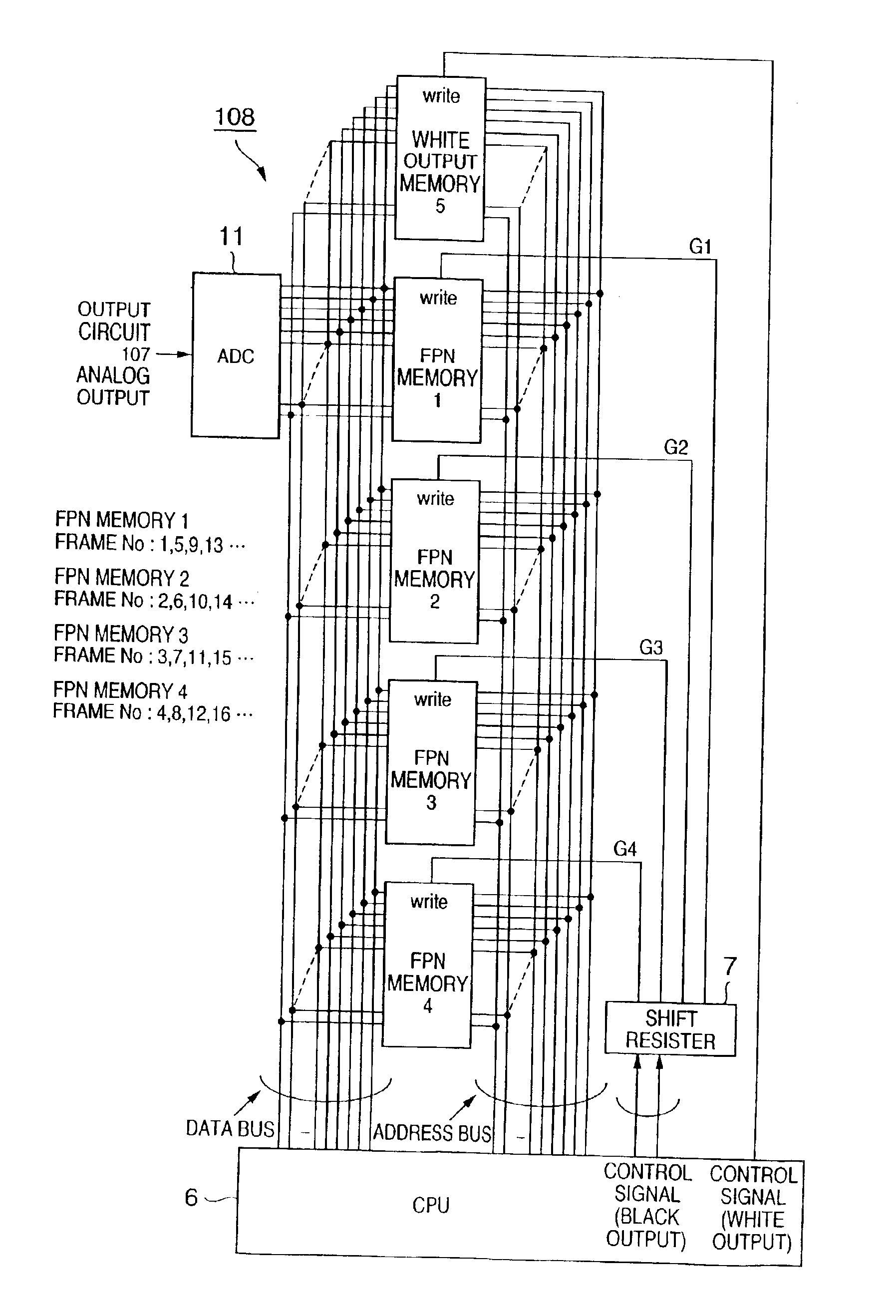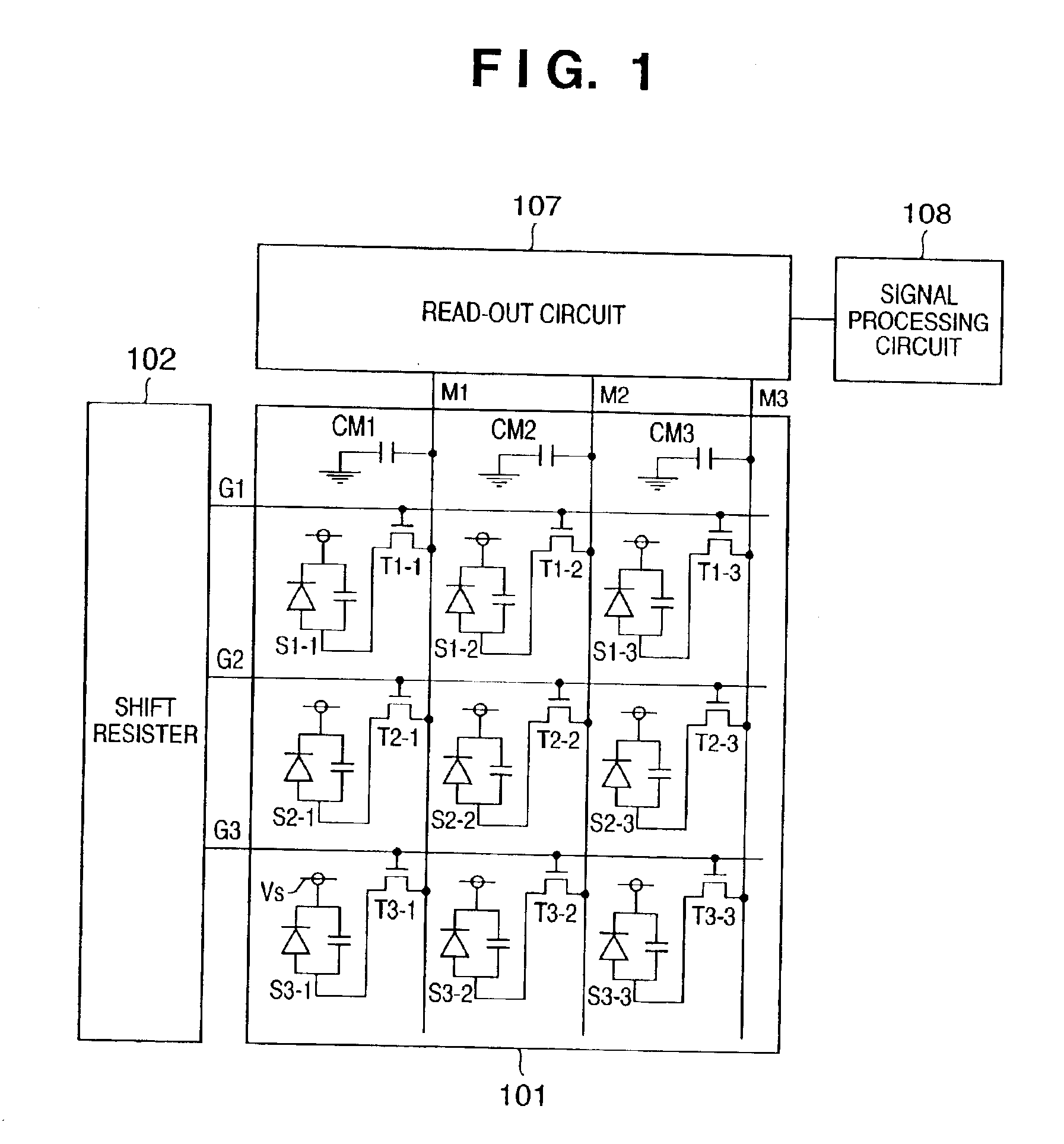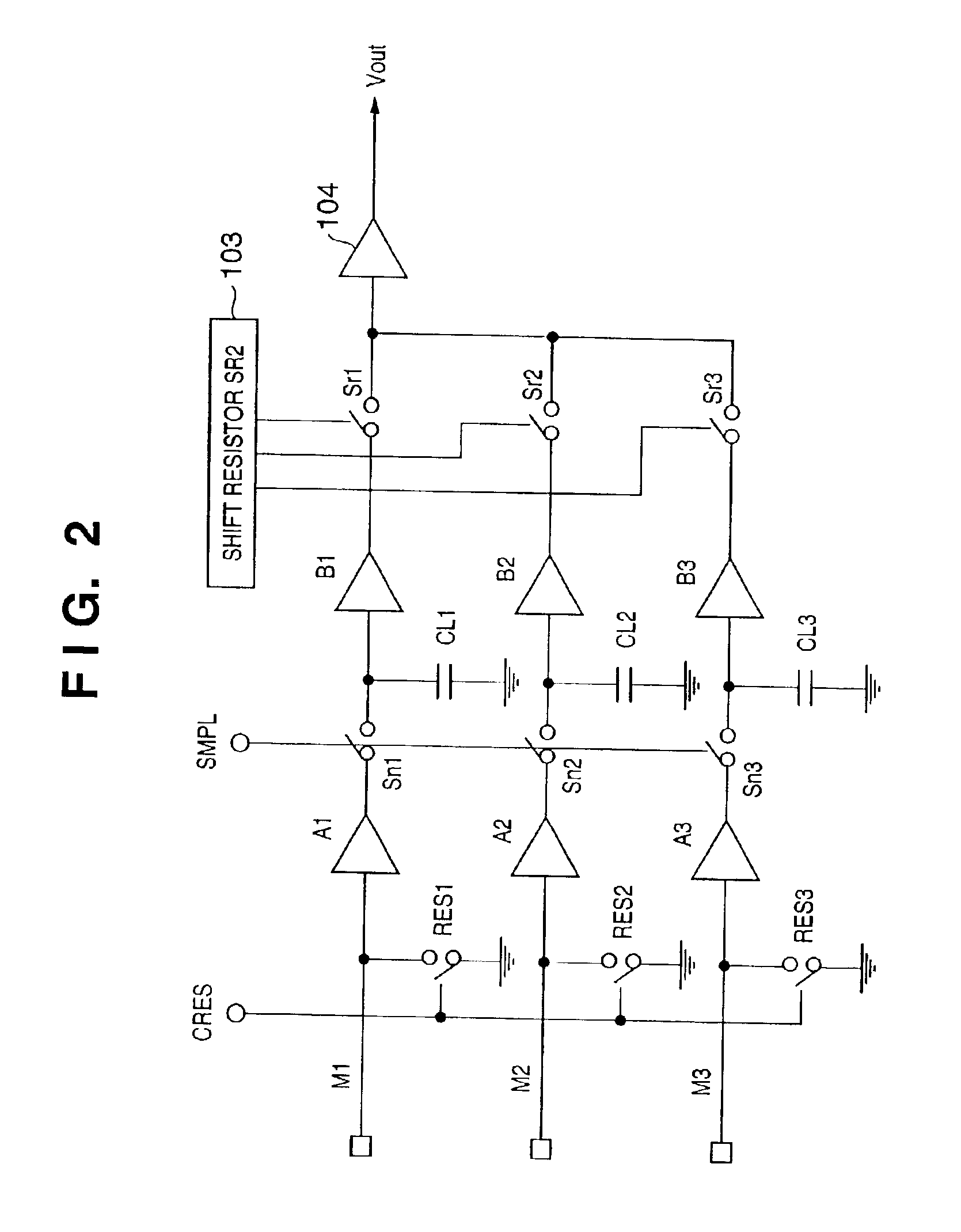Radiological imaging apparatus and method
a technology of radiological imaging and apparatus, applied in the direction of radiological control devices, instruments, applications, etc., can solve the problems of long-term storage, time and effort involved in manual search and retrieval of physical images, and complicated process of developing images
- Summary
- Abstract
- Description
- Claims
- Application Information
AI Technical Summary
Benefits of technology
Problems solved by technology
Method used
Image
Examples
Embodiment Construction
[0037]Preferred embodiments of the present invention are described in detail in accordance with the accompanying drawings, in the first instance FIG. 1.
[0038]FIG. 1 is a circuit diagram showing schematically the structure of an imaging apparatus using an amorphous silicon thin film semiconductor according to one embodiment of the present invention, in which the apparatus uses photoelectric converters to take visible light and convert that light into electrical signals.
[0039]In this X-ray imaging device, an operator can select between a moving-picture mode and a still-picture mode. It should be noted that FIG. 1 does not show the fluorescent material used to convert the X-rays into visible light, and although the present embodiment is described with reference to X-ray imaging, the present invention is not limited to such but should be understood as being equally applicable to instances involving other types of radiation, such as, for example, alpha-rays, beta-rays or gamma-rays.
[0040...
PUM
 Login to View More
Login to View More Abstract
Description
Claims
Application Information
 Login to View More
Login to View More - R&D
- Intellectual Property
- Life Sciences
- Materials
- Tech Scout
- Unparalleled Data Quality
- Higher Quality Content
- 60% Fewer Hallucinations
Browse by: Latest US Patents, China's latest patents, Technical Efficacy Thesaurus, Application Domain, Technology Topic, Popular Technical Reports.
© 2025 PatSnap. All rights reserved.Legal|Privacy policy|Modern Slavery Act Transparency Statement|Sitemap|About US| Contact US: help@patsnap.com



